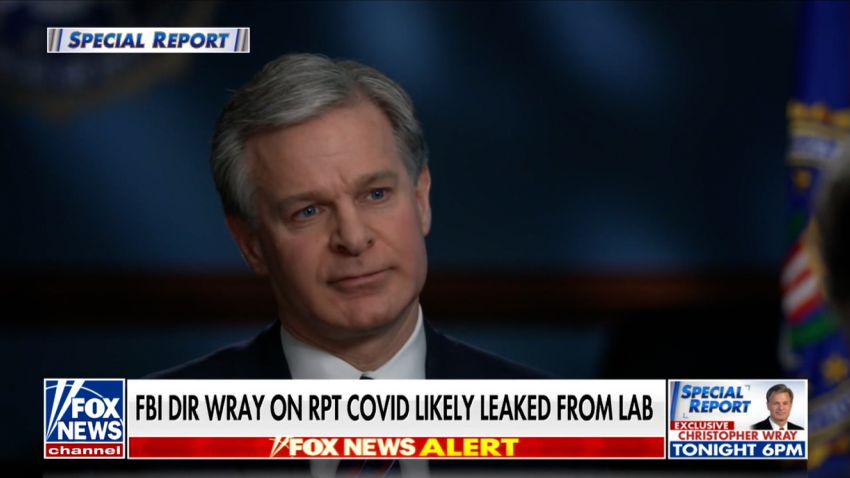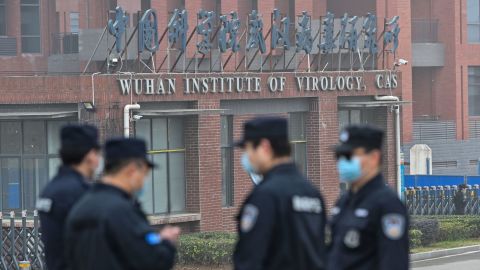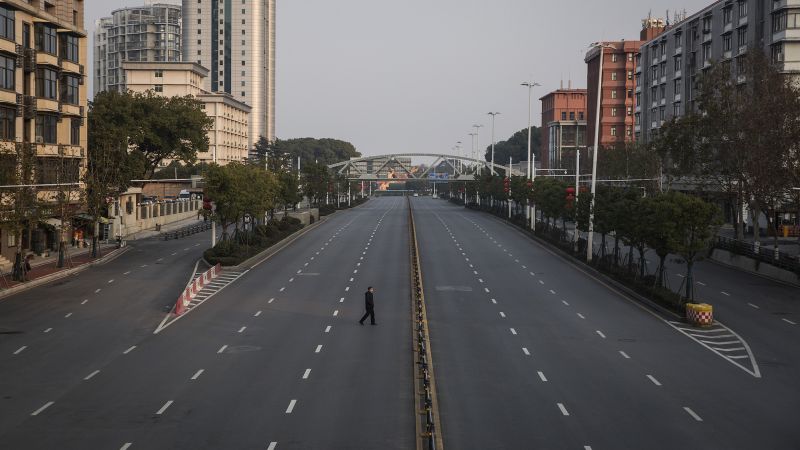Editor’s Note: A version of this story appeared in CNN’s Meanwhile in China newsletter, a three-times-a-week update exploring what you need to know about the country’s rise and how it impacts the world. Sign up here.
Hong Kong
CNN
—
The US Department of Energy’s assessment that Covid-19 most likely emerged due to a laboratory accident in China has reignited fierce debate and attention on the question of how the pandemic began.
But the “low confidence” determination, made in a newly updated classified report, has raised more questions than answers, as the department has publicly provided no new evidence to back the claim. It’s also generated fierce pushback from China.
“We urge the US to respect science and facts, stop politicizing this issue, stop its intelligence-led, politics-driven origins-tracing,” a Chinese Foreign Ministry spokesperson said on Wednesday.
The Department of Energy assessment is part of a broader US effort in which intelligence agencies were asked by President Joe Biden in 2021 to examine the origins of the coronavirus, which was first detected in the Chinese city of Wuhan.
That overall assessment from the intelligence community was inconclusive, and then, as now, there has yet to be a decisive link established between the virus and a specific animal or other route – as China continues to stonewall international investigations into the origins of the virus.
Four agencies and the National Intelligence Council assessed with low confidence that the virus likely jumped from animals to humans through natural exposure, while one assessed with moderate confidence that the pandemic was the result of a laboratory-related accident. Three other intelligence community elements were unable to coalesce around either explanation without additional information, according to a declassified version of the 2021 report.
The majority of agencies remain undecided or lean toward the virus having a natural origin – a hypothesis also widely favored by scientists with expertize in the field. But the change from the US Department of Energy has now deepened the split in the intelligence community, especially as the director of the FBI this week commented publicly for the first time on his agency’s similar determination made with “medium confidence.”
Intelligence agencies can make assessments with either low, medium or high confidence. A low confidence assessment generally means the information obtained is not reliable enough, or is too fragmented to make a more definitive judgment.
And while the assessment and new commentary has pulled the theory back into the spotlight, neither agency has released evidence or information backing their determinations. That raises crucial questions about their basis – and shines the spotlight back on gaping, outstanding unknowns and need for further research.

Hear FBI director remark on Covid lab leak theory
Scientists largely believe the virus most likely emerged from a natural spillover from an infected animal to people, as many viruses before it, though they widely acknowledge the need for more research of all options. Many have also questioned the lack of data released to substantiate the latest claim.
Virologist Thea Fischer, who in 2021 traveled to Wuhan as part of a World Health Organization (WHO) origins probe and remains a part of ongoing WHO tracing efforts, said it was “very important” that any new assessments related to the origin of the virus are documented by evidence.
“(These are) strong accusations against a public research laboratory in China and can’t stand alone without substantial evidence,” said Fischer, a professor at the University of Copenhagen.
“Hopefully they will share with the WHO soon so the evidence can be known and assessed by international health experts just as all other evidence concerning the pandemic origin.”
A senior US intelligence official told the Wall Street Journal, which first reported the new Department of Energy assessment, that the update to the assessment was conducted in light of new intelligence, further study of academic literature and in consultation with experts outside government.
The idea that the virus could have emerged from a lab accident became more prominent as a spotlight was turned on coronavirus research being done at local facilities, such as the Wuhan Institute of Virology. It was further enhanced amid a failure to find a “smoking gun” showing which animal could have passed the virus to people at Wuhan’s Huanan Seafood Wholesale Market – the location linked to a number of early known cases – amid limitations to follow-up research.
Some experts who have been closely involved in examining existing information, however, are skeptical of the new assessment giving the theory more weight.
“Given that so much of the data we have points to a spillover event occurring at the Huanan market in late 2019 I doubt there’s anything very significant in it or new information that would change our current understanding,” said David Robertson, a professor in the University of Glasgow’s School of Infection and Immunity, who was involved in recent research with findings that supported the natural origin theory.
He noted that locations of early human cases centered on the market, positive environmental samples, and confirmation that live animals susceptible to the virus were for sale there are among evidence supporting the natural origins theory – while there’s no data supporting a lab leak.
“The extent of this evidence continually gets lost (in media discussion) … when in fact we know a lot about what happened, and arguably more than other outbreaks,” he said.

Efforts to understand how the pandemic started have been further complicated by China’s lack of transparency – especially as the origin question spiraled into another point of bitter contention within rising US-China tensions of recent years.
Beijing has blocked robust, long-term international field investigations and refused to allow a laboratory audit, which could bring clarity, and been reticent to share details and data around domestic research to uncover the cause. However, it repeatedly maintains that it has been transparent and cooperative with the WHO.
Chinese officials carefully controlled the single WHO-backed investigation it did allow on the ground in 2021, citing disease control measures to restrict visiting experts to their hotel rooms for half their trip and to prevent them from sharing meals with their Chinese counterparts – cutting off an opportunity for more informal information sharing.
Citing data protection, Beijing has also declined to allow its own investigatory measures, like testing stored blood samples from Wuhan or combing through hospital data for potential “patient zeros,” to be verified by researchers outside the country.
China has fiercely denied that the virus emerged from a lab accident, and has repeatedly tried to assert it could have arrived in the country for the initial outbreak from elsewhere – including a US laboratory, without offering any evidence supporting the claim.
But a top WHO official as recently as last month publicly called for “more cooperation and collaboration with our colleagues in China to advance studies that need to take place in China”– including studies of markets and farms that could have been involved.
“These studies need to be conducted in China and we need cooperation from our colleagues there to advance our understandings,” WHO technical lead for Covid-19 Maria Van Kerkhove said at a media briefing.
When asked about the Department of Energy assessment by CNN, a WHO representative said the organization and its origins tracing advisory body “will keep examining all available scientific evidence that would help us advance the knowledge on the origin of SARS CoV 2 and we call on China and the scientific community to undertake necessary studies in that direction.”
“Until we have more evidence all hypotheses are still on the table,” the representative said.

